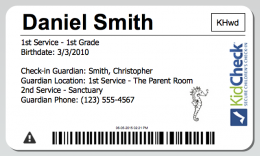The Child Safeguarding Committee

At KidCheck, one of our goals is to provide relevant resources and tools that can assist any organization focused on children to identify, prevent, and respond to child maltreatment. It’s a big job and to do it properly it simply cannot fall on only one person. That’s where a Child Safeguarding Committee can help.
The Role of the Committee
A Child Safeguarding Committee seeks to create a safe environment for children by creating and implementing a set of working principles (A Child Protection Policy) that minimizes the grey area when interacting with children and responding to all allegations of abuse.
The committee will be responsible for the following actions:
- Developing child safety policy guidelines for staff, leaders, and volunteers
- Communicating and implementing policy guidelines for the entire organization
- Review compliance, evaluate policy and update when needed
- Answer policy questions and determine ongoing communication vehicles such as signage, newsletter, quarterly meetings, board/leadership review, etc.
- Respond to abuse allegations and safety concerns quickly and in accordance with the law
It’s important for the board to have a strong presence within the organization and act as a layer of protection for children, staff, and volunteers, as well as a deterrent for offenders. Before joining the board, each member should receive training in child protection and have a clear understanding of their role and responsibility.
Establishing the Committee
Choosing the right participants is imperative for overall success. Effective committees include people from different backgrounds and diverse areas of expertise. It’s important to balance those with experience in law enforcement and emergency response with those who are strong and skilled in other unrelated areas.
Professionals with experience in human resources, project management, child protection policy, a mental health professional, someone already volunteering, or a parent raising a child who frequents your organization are good candidates.
Identify people who have a desire to learn, the bandwidth to participate, and the willingness to work well with others. Keep in mind child safety is the goal, so participants must be committed to prioritizing safety.
The Numbers
Committee sizes should reflect a number that avoids immoderations. The goal is to have the number of participants that allows the committee to be agile, subtle, and highly efficient. Too few members increase the workload which can be difficult for working professionals. In contrast, too many members can create an environment that hinders progress and falls into the trap of analysis paralysis where even the smallest of details cannot be decided upon. Based on research and observation the highest functioning groups are comprised of four to five people, a number ideal for promoting healthy discussion, workload balancing, and continuing productivity. However, be sure to evaluate the needs of your organization and adjust from there.
Personality is Important
Beyond expertise and experience, also consider a participant’s character, disposition, and temperament. All go a long way in establishing how a team will work together and engage the greater organization both internally and externally.
Each committee member should undergo a comprehensive screening process. Screening looks at a candidate from a multi-dimensional perspective and can help identify behaviors that are not beneficial. Screening is also imperative for eliminating potential predators as they often seek the position of authority and influence.
Conflict on any committee is inevitable, but eliminating those who lack a sensitive nature or the ability to support opposing opinions is best identified early on in the process. If a candidate struggles with being verbally abusive, or not working well with others, it can hinder the ability of the committee to function properly.
The Purpose
Keeping kids safe in your organization isn’t the responsibility of just one person and can be a larger task then someone feels they signed up to do. Improving safety takes the support of leadership and management participation at every level. In today’s highly sensitive, safety-driven culture it works best to enlist the help of participants willing to take a deliberate approach to reduce risks, starting the conversation, and educating on abuse prevention. That’s the charter of the Safeguarding Committee, and it takes everyone a step closer to protecting the children.
Click here to learn about the benefits of secure children’s check-in. For more safety tips, best practices, and original content join our growing social community. You can find us on Twitter, Facebook, Google+, Pinterest and Instagram.


